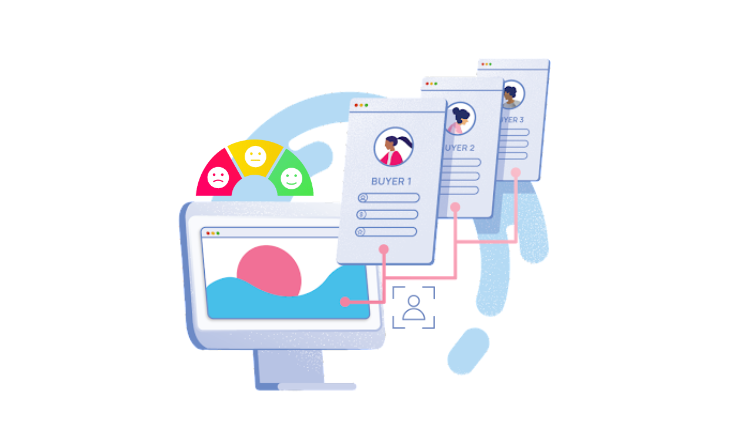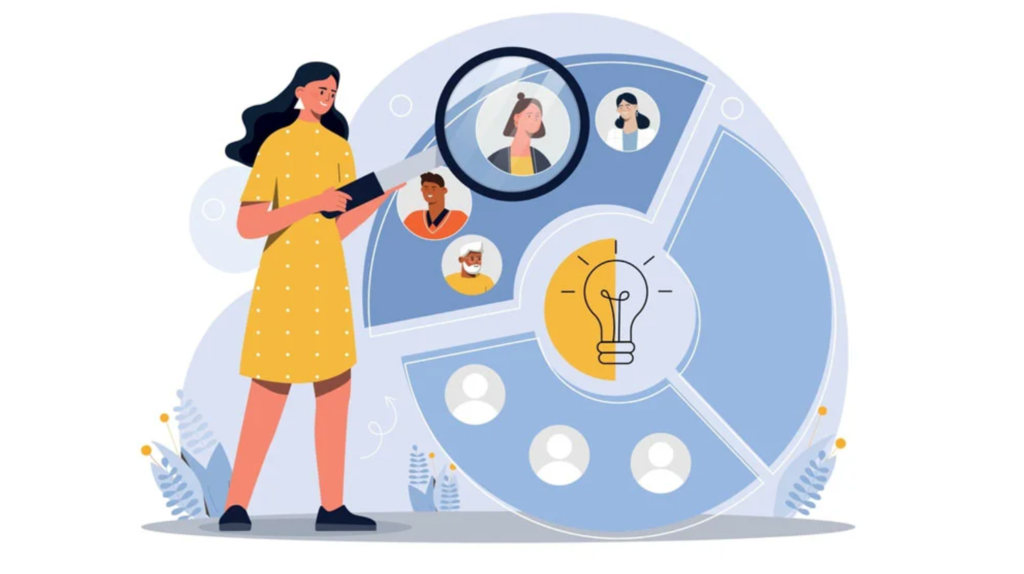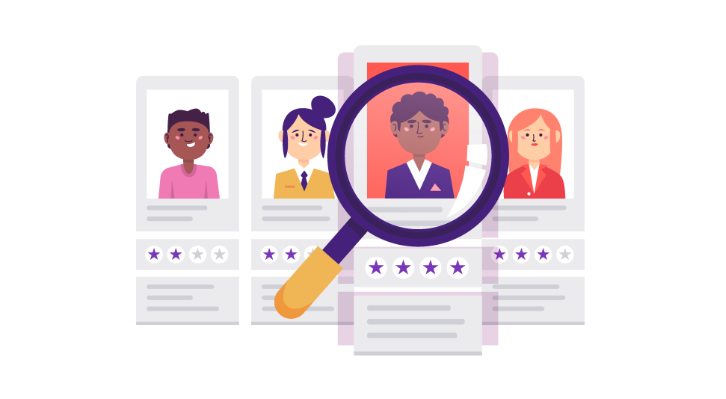In the digital age, where online marketing is more competitive than ever, the ability to not only attract but also convert website visitors into paying customers is paramount. Conversion Rate Optimisation (CRO) is the strategic process of increasing the percentage of website visitors who take a desired action, such as making a purchase, signing up for a newsletter, or filling out a contact form. One of the most effective techniques for improving CRO is the use of customer personas.
What Are Customer Personas?
Customer personas, also known as buyer personas, are detailed, semi-fictional representations of your ideal customers. They are crafted based on a combination of research, data, and market insights. These personas help marketers understand their audience’s needs, preferences, pain points, and behaviours. While some might mistake customer personas for simple target audience definitions, they go deeper by adding a human face and personality to your ideal customer. Think of them as your marketing team’s guiding stars, ensuring your strategies are always aligned with your customer’s expectations and desires.
Creating effective customer personas involves gathering and analyzing data, both quantitative and qualitative, from various sources such as surveys, customer interviews, website analytics, and market research. The ultimate goal is to paint a clear picture of who your customers are, what drives them, and how they make purchasing decisions.
The Benefits of Using Customer Personas for CRO
Customer personas play a crucial role in CRO by delivering several key benefits. First and foremost, customer personas enable a level of customer targeting that transcends the one-size-fits-all approach. Instead of casting a broad net and hoping to catch a diverse range of customers, personas allow you to tailor your marketing efforts with precision. Each persona embodies a specific customer segment, and by catering your messaging and strategies to these segments, you create content that is not just relevant but highly engaging. This level of personalization heightens the user experience, ensuring that your website content, design, and interactions are meticulously aligned with the preferences and expectations of your target audience.
Beyond personalisation, customer personas significantly enhance your ability to communicate effectively with your customers. When your messaging resonates with each persona’s unique needs, desires, and pain points, it forges an emotional connection. This emotional resonance is a catalyst for higher conversion rates. It empowers your audience, making them feel understood, valued, and catered to. This connection is not just transactional; it’s a gateway to fostering trust and loyalty. When your customers feel that you genuinely understand and care about their needs, they are more inclined to take the desired action, whether it’s making a purchase, signing up for a newsletter, or engaging with your content.
In essence, customer personas are your secret weapon in the battle for conversions. They are the bridge between your brand and your customers, ensuring that every interaction is tailored, meaningful, and persuasive. With personas at the helm of your CRO efforts, you can fine-tune your strategies to cater to the precise desires of your audience, creating a virtuous cycle of optimised conversions and long-term customer loyalty.
Building Customer Personas

1. Identifying Your Target Audience
Before creating customer personas, it’s essential to identify your target audience. Your ideal customer should be defined with precision. Market research, competitor analysis, and a deep understanding of your product or service are all part of this discovery process. To find your ideal customers, consider their demographics, psychographics, and behaviour. For instance, you may want to know their age, gender, income, interests, values, and online behaviour.
Once you’ve gathered enough data, you can also examine your existing customer base to identify patterns and commonalities. Your current customers often hold the key to understanding who your ideal customers are. This segmentation helps narrow down your target audience and lays the foundation for crafting detailed personas.
2. Segmenting Your Audience
Segmenting your audience takes your customer personas to a more granular level. Rather than treating your target audience as a homogeneous group, you can create sub-personas, each catering to a specific segment within your audience. The criteria for segmentation can vary widely, including demographic factors like age, gender, location, or psychographic factors like interests, values, and pain points. By creating sub-personas, you can deliver even more personalised and relevant experiences to your customers.
For instance, a clothing retailer may segment their audience based on gender, age, and style preferences. This allows them to tailor their marketing messages and product recommendations to each group, resulting in higher engagement and conversion rates.
3. Persona Templates and Examples
Crafting detailed customer personas requires a well-defined process. Start with persona templates that encompass key information about each persona, such as their name, age, job title, interests, pain points, goals, and preferred communication channels. These templates act as a reference point for your marketing team to ensure consistency in their approach.
Here’s a simplified example:
- Persona Name: Sarah
- Age: 32
- Job Title: Marketing Manager
- Interests: Yoga, organic cooking, sustainability
- Pain Points: Lack of time for shopping, concern about eco-friendly products
- Goals: Finding stylish and sustainable clothing
- Preferred Communication Channel: Email and Instagram
By populating these templates with detailed information, you create a persona that feels real and relatable to your team. This makes it easier to empathise with and understand the persona’s needs, which is crucial for effective marketing.
Using Customer Personas for Website Optimisation

Aligning Website Content
Once you’ve created customer personas, it’s time to put them to use in optimising your website. One of the most significant advantages of having personas is the ability to tailor your website content to their needs and preferences. For example, if you have a persona named “Sarah,” who is environmentally conscious, you can feature eco-friendly products prominently on your site and write content that emphasizes their sustainability.
This personalisation of content goes a long way in capturing your visitors’ attention and keeping them engaged. When they see that your website speaks directly to their needs, they are more likely to stay longer, explore your offerings, and eventually convert.
Optimising User Experience
The user experience on your website is a critical factor in CRO. Your personas guide you in creating user journeys that align with their expectations. By understanding the pain points and preferences of each persona, you can reduce friction points in the conversion funnel. If “Sarah” values sustainability, you can ensure that your website offers a seamless path to eco-friendly product categories, with clear navigation and filtering options.
Furthermore, the website’s overall navigation and design can be fine-tuned based on personal insights. For instance, if a specific persona prefers a minimalistic and clean design, you can adapt your website’s layout to cater to this preference, making it more appealing to that segment of your audience.
Crafting Persuasive Copy
The use of customer personas can be especially powerful in your copywriting efforts. It allows you to create emotionally resonant content that speaks directly to the desires and pain points of each persona. When it comes to copywriting, the principles apply to every aspect, from headlines and leads to calls to action (CTAs).
For instance, a persona who values time-saving solutions may respond well to a headline like “Streamline Your Daily Routine with Our Time-Saving Products,” while another persona who seeks luxury may prefer “Experience Unrivaled Luxury with Our Exclusive Collections.” The leads and CTAs can be tailored in a similar manner to cater to each persona’s specific motivations.
By using customer personas to craft persuasive copy, you make your messaging more compelling and relatable, significantly increasing your chances of conversion.
A/B Testing with Customer Personas

A/B testing is a pivotal practice in the realm of Conversion Rate Optimisation (CRO), offering a methodical and data-driven approach to improving your website’s performance. It involves creating multiple versions (A and B) of a webpage, element, or feature and systematically testing them to ascertain which version garners the best results in terms of your conversion goals. The magic of A/B testing lies in its ability to provide concrete, data-backed insights into the impact of changes on your conversion rates.
However, A/B testing becomes exponentially more potent when guided by customer personas. These personas serve as a beacon, directing your testing strategy with a level of precision and focus that generic testing often lacks. By leveraging persona-driven A/B testing, you harness the potential to make highly targeted changes that cater to the specific preferences and pain points of different segments within your audience.
To initiate the process, you start by developing A/B test hypotheses based on the deep insights you’ve acquired about each persona. For instance, let’s consider “Sarah”, your environmentally conscious persona. You’ve identified that she places a high value on eco-friendly products. With this knowledge in hand, you can formulate a hypothesis that changing the homepage banner to prominently feature eco-friendly products will result in increased engagement and conversions for Sarah. This persona-specific hypothesis is the key to persona-driven A/B testing.
After implementing these changes and running your A/B tests, you are poised to measure the impact of these persona-driven alterations on your conversion rates. The results you obtain are highly informative; they provide a tangible indication of which changes are most effective for each persona. This data empowers you to not only understand the specific preferences of each segment within your audience but also to fine-tune your website accordingly. You’re no longer operating on guesswork or generalised assumptions; you’re optimising your website based on real, actionable data that is directly aligned with the unique needs and behaviours of your customer personas.
In the realm of CRO, persona-driven A/B testing is akin to having a secret weapon at your disposal. It’s the means through which you unlock the full potential of your personas and ensure that your optimisation efforts are precisely aligned with the nuanced desires of your audience. By coupling A/B testing with personas, you’re able to not only increase conversion rates but also create a user experience that feels tailor-made for each persona. It’s a dynamic, agile, and highly effective approach that guarantees the optimal performance of your website, a boon in the highly competitive landscape of online marketing.
Feedback and Iteration
Conversion Rate Optimisation (CRO) is not a one-time project but rather an ongoing and dynamic process that requires constant attention and adaptation. Your customer personas are pivotal to this continuous cycle of optimisation. They serve as the compass that guides your strategy and allows you to stay connected with your audience in a rapidly evolving digital landscape.
Your customer personas are not static; they should evolve as your audience changes and your business grows. Gathering user feedback and insights is a vital component of this evolution. By continuously collecting and analysing feedback, you gain valuable data that reflects real-world interactions and changing customer needs. This feedback might come from various sources, including customer surveys, reviews, social media interactions, and website analytics.
One of the key benefits of having well-defined customer personas is their ability to help you interpret this feedback more effectively. Because personas represent a semi-fictional but deeply researched profile of your ideal customers, they can help you filter and make sense of the diverse feedback you receive. With personas in mind, you can pinpoint trends, identify recurring pain points, and understand which suggestions or complaints are most aligned with your target audience’s needs.
Feedback involves listening to your customers, acknowledging their input, and actively responding to it. By making improvements based on their feedback and aligning these changes with your personas, you demonstrate to your audience that you value their opinions and are dedicated to providing a better user experience. This commitment can foster trust and loyalty, which are essential for maintaining a strong customer base and achieving long-term success.

The Role of Analytics
Web analytics tools are indispensable assets in your CRO toolkit. They offer deep insights into how well your website is performing and provide quantitative data to gauge the effectiveness of your CRO efforts. These tools help you track key performance indicators (KPIs) that are central to persona-driven CRO, such as click-through rates, conversion rates, and bounce rates.
By closely monitoring your analytics, you can gather actionable insights into how well your customer personas are guiding your optimisation efforts. You’ll be able to identify areas where your personas are effective and where further refinement is needed. For instance, if you notice that a specific persona has a high click-through rate but a low conversion rate, it may indicate that there’s a gap between the expectations set by your messaging and the actual product or service experience. This insight can trigger persona-specific adjustments to close the gap and improve conversion rates.
Moreover, analytics help you detect changes in user behaviour and preferences. By comparing data over time, you can spot trends, shifts, and emerging patterns. For example, you might observe that one of your personas is showing increased interest in a particular product category or interaction method. Analytics empower you to react swiftly to these changes and align your strategy accordingly.
In essence, web analytics and feedback collection are your allies in the journey of persona-driven CRO. They provide you with the objective data needed to validate the effectiveness of your personas and adjust your approach as your audience evolves. It’s through this data-driven, feedback-centric process that you can continually fine-tune your strategies, ensuring that your CRO efforts remain relevant and aligned with your customer personas in a constantly changing digital landscape.

In the rapidly changing world of online marketing, the use of customer personas for Conversion Rate Optimisation is not a luxury but a necessity. These semi-fictional representations of your ideal customers empower you to create highly personalised experiences, craft persuasive copy, and implement data-driven A/B testing, resulting in improved conversion rates. The journey of using customer personas for CRO is ongoing, requiring adaptability, data-driven decision-making, and a commitment to continuously refining your approach.
Are you ready to make your website a conversion powerhouse? It all begins with understanding your customers through the lens of well-crafted personas.


